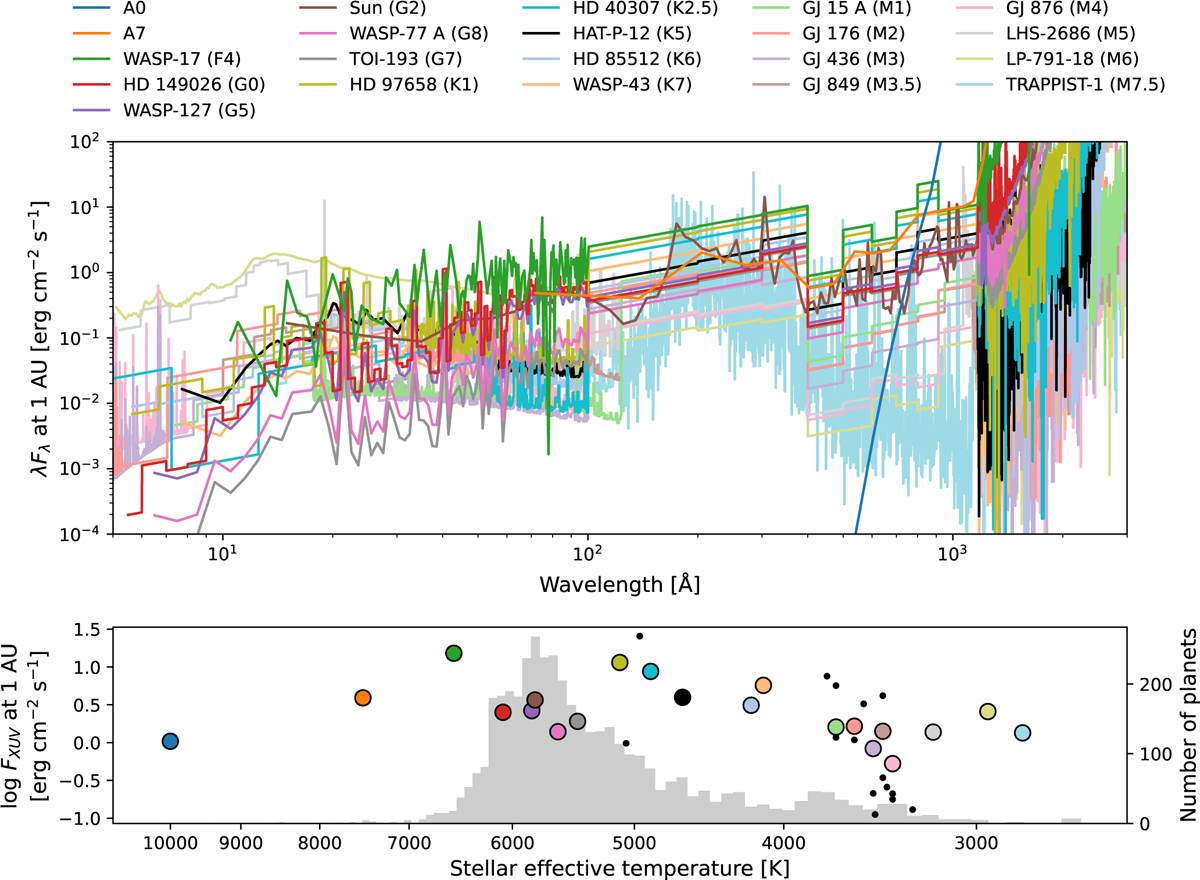Fig. 1

Download original image
Top: stellar spectral energy distribution templates used in this work. The A0 and A7 spectra are based on the work of Fossati et al. (2018), the solar spectrum is from the TIMED and SORCE missions (Woods et al. 2005; Rottman 2005), and the rest of the spectra are from the MUSCLES survey (France et al. 2016; Youngblood et al. 2016; Loyd et al. 2016; Wilson et al. 2021; Behr et al. 2023). Bottom: integrated XUV flux (λ < 911 Å) of each SED as a function of the effective temperature of the star (scatter points; see also Table 1). Small black points indicate SEDs in the MUSCLES database that we do not use. The grey histogram (read from the right y-axis) shows the host star effective temperatures of the initial planet population. Planets are assigned the SED template of the closest stellar spectral type. If the spectral type is not reported, the SED template of the star with the closest effective temperature is assigned.
Current usage metrics show cumulative count of Article Views (full-text article views including HTML views, PDF and ePub downloads, according to the available data) and Abstracts Views on Vision4Press platform.
Data correspond to usage on the plateform after 2015. The current usage metrics is available 48-96 hours after online publication and is updated daily on week days.
Initial download of the metrics may take a while.


